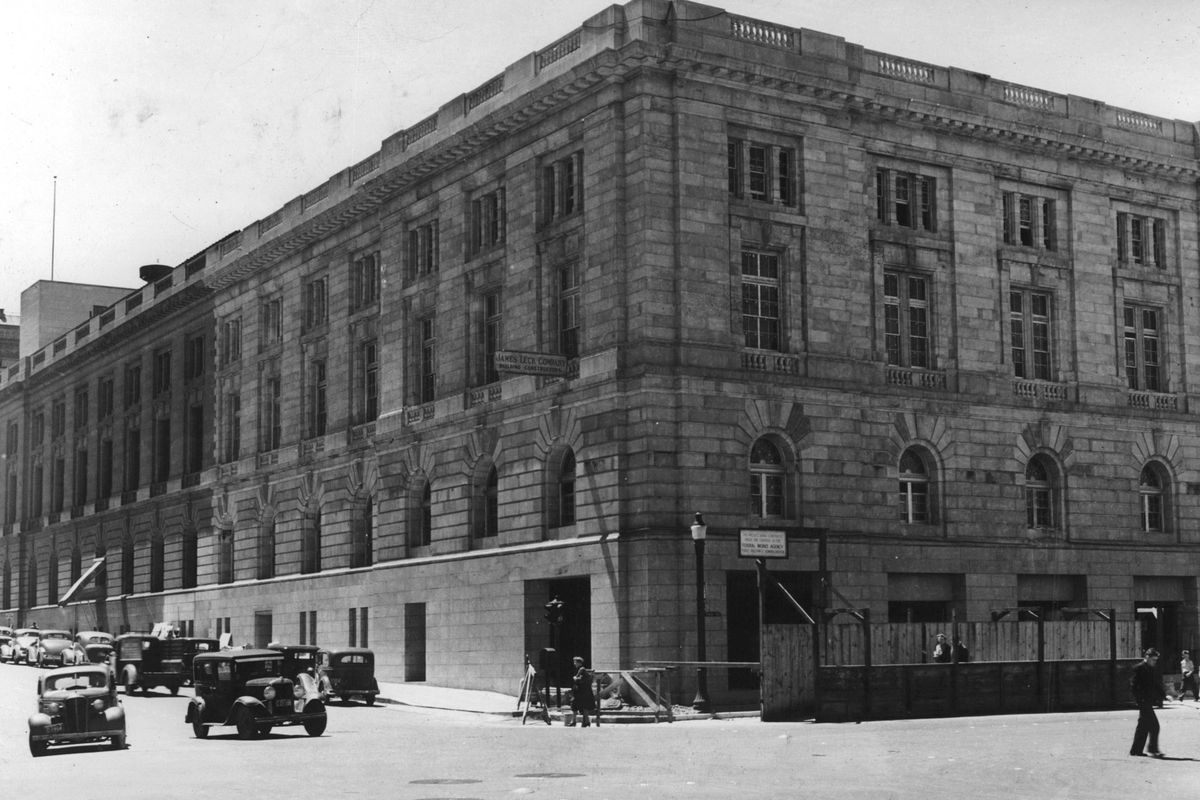Then and Now: Federal Building and Post Office

Seth Scranton, one of the original white settlers at the waterfalls of Spokane in 1870, was the first postmaster of Spokane. The first office was a double log cabin Scranton built as his home.
But the post office traffic grew with the burgeoning city and the boom years of the late 1890s. The early 1900s created the need for central offices for the many departments of the federal government. A post office and federal courthouse building was constructed in 1909 at Riverside Avenue and Lincoln Street in downtown Spokane. The architecture was typical federal neoclassical, with granite stone in the foundation and the exterior clad in sandstone. It wasn’t occupied until 1910 and the post office didn’t move in until 1911.
The interior featured blue-veined marble wall panels, white painted faux Greek columns and varnished wooden doors. The style combined Greek revival touches and utilitarian austerity.

The expansion of federal government agencies during the Great Depression prompted a search for more office space in Spokane. Planners briefly looked to build on Havermale Island in the middle of the Spokane River, where there was already a railway postal station. But the land was too expensive and the decision was made to expand the current building. The Arthur Jones building just north of the post office was purchased and torn down.
The expansion was started in 1940 and completed in about a year. The expansion featured matching sandstone siding, from the same quarry as the original siding, and other architectural details. A slight difference in coloration of the stone indicates where the two sections were joined.
Newcomers to the expanded federal building were the Civil Aeronautics Authority, a forerunner of the Federal Aviation Administration, the Social Security board and the federal grain supervision department. In addition, the post office got 70 percent more space for both customer service and for mail sorting.
Except for six small rooms, the Department of Justice stayed in control of the third floor of the expanded building. Military recruiting, customs, the Secret Service, Marshals Service, Internal Revenue Service, Federal Bureau of Investigation, Bureau of Indian Affairs, Forest Service, and soil conservation agencies all received expanded space in the building.